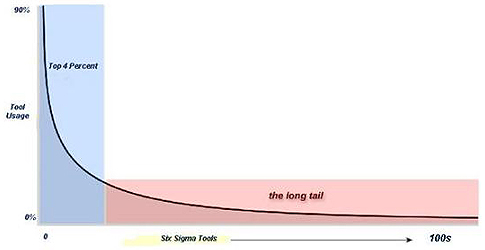After a meal at a local Chinese restaurant, my fortune cookie said, “If you keep too busy learning the tricks of the trade, you may never learn the trade.” When I think about how this applies to Six Sigma, it seems obvious that far too much Six Sigma training is dedicated to the tricks of the trade and not enough to the actual trade.
|
ADVERTISEMENT |
The long tail of Six Sigma tools
To fill the long weeks of Six Sigma training, most trainers cover every tool in the toolbox as if they are equally important. One trainer admitted that their Black Belt training for health care included three days of design of experiments (which health care never really needs).
In any profession, there are a handful of tools that are used all the time and a slew that are used once in a very long while. This is true of Six Sigma; there is a “long tail” of tools.

…
Comments
Well said. Don't forget the
Well said. Don't forget the most useful and most forgotten tool of all ... brainstorming. Most people don't have a clue how to do it properly.
Six Sigma tools like DoE are an utter farce for the majority, unless you're working in R&D.
Add new comment